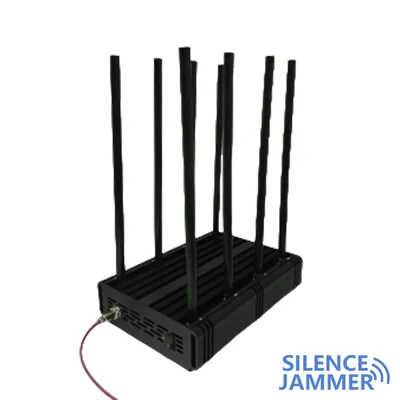Background and function of drone signal blockers
A drone signal jammer is a device designed to block the wireless communication signals of drones. Its main function is to restrict the illegal flight or mission of drones in a specific area. With the development of technology, drones have gradually become a part of our lives. However, problems associated with them, such as privacy invasion and airspace disruption, have gradually emerged. In order to solve these problems, drone signal jammers came into being. This article will introduce in detail how drone jammer devices work and how to block drone communication signals.

First, we need to understand how drones communicate. Drones mainly rely on radio waves for data transmission, usually using the 2.4GHz and 5.8GHz frequency bands. Since these two frequency bands are widely used around the world, unti-drone jammers need to cover these two frequency bands to ensure effective jamming of most drones.
The working principle of the drone jammer device mainly involves two aspects: blocking the communication between the drone and the remote controller, and blocking the communication between the drone and the ground control station. The core of these two aspects is to interfere with the drone's communication link by emitting specific radio wave signals so that it cannot work properly.
Blocking communication between drones and ground control stations
First, let’s look at blocking the communication between the drone and the remote control. When the user operates the drone, the remote controller sends control signals to the drone. These signals are usually transmitted using pulse code modulation (PPM) or frequency modulation (FM). UAV jammers emit radio waves with the same or similar frequency, phase and modulation method as these signals, causing interference to the signals received by the UAV, making it impossible to properly interpret the control instructions of the remote controller. Even if the remote control can still operate normally, the drone cannot fly according to the user's instructions.
Secondly, let’s look at blocking the communication between the drone and the ground control station. In addition to the remote control, the drone can also be remotely controlled through the ground control station. The ground control station establishes a data link with the drone to transmit remote control instructions, image information and other data. Drone jammer devices can also interfere with the normal communication of this data link by emitting radio waves with specific frequencies, phases and modulation methods. In this way, even if the ground control station can still operate normally, the drone cannot receive any instructions and information and cannot perform its mission.
In actual use, drone signal jammers usually have the following characteristics:
- Wide coverage: Although the coverage of a single jammer blocker is limited, the impact range can be expanded through multiple devices or technical means.
- Adjustable interference intensity: UAV jammers can adjust the interference intensity according to the needs of different drones to ensure effective signal blocking.
- Strong portability: Usually designed as a portable device, it is convenient for users to carry and use it at any time in different occasions.
- Multi-band coverage: It can interfere with signals in the 2.4GHz and 5.8GHz bands, which are the mainstream frequencies used by most drone communications.
- Dual interference function: It can not only block the communication between the drone and the remote control, but also interfere with the communication link between the drone and the ground control station, ensuring comprehensive and effective signal shielding.
- Airspace security guarantee: By preventing illegal drone flights, it helps to maintain airspace security and prevent privacy violations and airspace disturbances.
In short, the UAV signal jammer emits radio waves of specific frequency, phase and modulation method to block the communication signals between the UAV, the remote controller and the ground control station, thereby achieving effective interference with the UAV. This kind of equipment plays an important role in ensuring airspace security and preventing privacy violations. However, we should also note that the misuse of drone jammer devices may cause inconvenience to normal life and work, so we need to comply with relevant laws and regulations when using them to ensure their reasonable and legal use.


